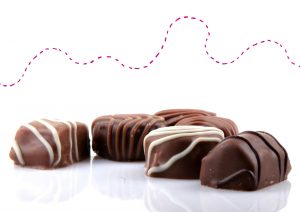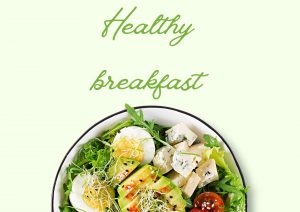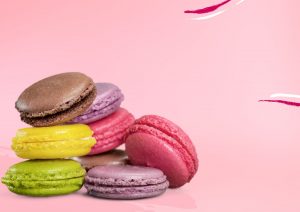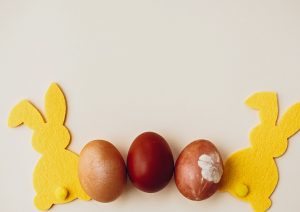Table of Contents
ToggleTips for egg-cellent teeth during Easter!
Bella Dental wishes all of our wonderful patients a very Happy Easter!
With Easter just around the corner, many people are thinking about chocolate bunnies, egg hunts, and spending time with family and friends.
As you already know, consuming sugar can lead to tooth decay and cavities, so Easter time is challenging time of year for your dental health. In order to remember the importance of your dental health during this holiday season. Here are some tips to help you maintain good dental hygiene and keep your teeth healthy and happy during Easter:
Blog Summary
- Reduce the total amount of sugar consumption
- What to eat in the beginning of your day
- Choose better Easter treats
- Healthier options
- Timing to brush your teeth
- Saliva protects your teeth
1. Reduce the total amount of sugar consumption

Based off the World Health Organisation, the recommended sugar intake is to have less than 10% of your daily energy coming from sugar. Here is a guide for various age categories:
- up to 6 years old, no more than 19 grams of sugar per day
- for 7 to 10 year olds, 24 grams of sugar per day
- and for anyone over 11 years old, 30 grams of sugar per day
Easter eggs contain a large percentage of sugar. Take a Cadbury Creme Easter egg, with 26grams of sugar, that equates to approximately 6 teaspoons of sugar!
The amount of sugar contained in soft drinks, sugary snacks and desserts instead of wholesome nutritional meals greatly contributes to large sugar intakes. By reducing or replacing these unhealthy choices with healthier ones will go a long way in helping you maintain better health overall.
2. What to eat in the beginning of your day

Begin your day with a healthy filling breakfast to minimise the temptation to snack on sugary throughout the day.
Foods with high protein and fibre will keep you feeling fuller for longer. Good choices include, wholegrain breads and cereals, greek yogurt, eggs, oats and grains. Substitute sugar with fruit and honey. Read labels to check the quantity of sugar.
For spreads with your toast, have bananas, nut butters and cheese.
3. Choose better Easter treats
What to avoid

Some treats are worse than others for you and your child’s teeth:
Sticky candy: Surprisingly chocolate is a better choice than say foods that are sticky and gummy. Treats such as jelly beans, marshmallows, gummy bears, roll-ups all very easily stick to your teeth and are notoriously difficult to remove. This gives sugar additional time to stay and damage the enamel on your teeth. Dental crowns and fillings have also been lost due to consuming such sticky treats.
Hard treats: Avoid hard candy treats such as well such as lollipops, and rock sugar type treats as there’s a chance that they will break your teeth.
4. Healthier options

Here are some treat ideas for better oral and overall health:
Raw Chocolate
Raw chocolate is minimally processed and contains high levels of antioxidants. It’s also sugar-free, so you can eat it without feeling guilty! Raw chocolate comes in the form of bars or discs that you can melt down and use as a dip for fruit, or mix into smoothies or oatmeal. If you’re looking for a treat that’s not only good for your body but also tastes delicious, this is the way to go.
Dark Chocolate
Dark chocolate is better for your teeth. Go for ones with at least 70% cocoa and less than 8grams of sugar per serve. The antioxidants and ingredients in the cacao bean limit bacteria levels, strengthen tooth enamel and reduce acidity levels in your mouth.
This means that dark chocolate can help prevent cavities by reducing plaque build-up on your teeth that could lead to tooth decay.
Nuts
Nuts are a great way to add crunch and texture to your treats. They also help reduce the stickiness of chocolate, which can be helpful if you’re making something like truffles or fudge. Nuts are also good for your teeth because they help break down bacteria and plaque on the tooth’s surface.
Baking at home
If you’re looking for healthier Easter chocolate options, it’s important to choose the right ingredients. For example, dark chocolate is better than milk chocolate because it has more antioxidants and less sugar. You can also control the amount of sugar used in baking by using honey or maple syrup instead of white granulated sugar.
Eggs
If you want to go all out, try boiling regular eggs and decorating them with natural dyes. It’s a fun activity for kids and adults alike, and it’s highly nutritious!
Read the Labels
Reading food labels is a great way to know more about what you are eating. The ingredients are listed in order of how much they are in the product, so if sugars are near the top of the list, it means that item has more sugars than other ingredients. Other common sweeteners include corn syrup and fructose (fruit sugar), glucose (blood sugar), maltose or sucrose (table sugar).
Milk
Milk is a great choice for Easter chocolate because it contains calcium, which will assist in protecting your teeth against plaque and tooth decay. Calcium also makes the enamel stronger by helping to repair it when it’s damaged by acidic food or drinks like soda or fruit juice.
If you’re worried about getting too much fat from milk (or other dairy products), try low-fat versions instead. If you don’t like milk, consider eating cheese instead–it’s just as good for your teeth!
5. Timing to brush your teeth

After consuming sweet food or drinks, drink a glass of water. This helps to rinse away some of the sugar. Continue brushing your teeth twice a day for two minutes and flossing daily.
While many people may be tempted to immediately brush their after indulging in Easter treats, it’s important to wait at least 30 minutes before doing so.
The reason for this is simple: the sugar and acids present in many Easter treats can wear down tooth enamel, leaving teeth vulnerable to decay and damage. While saliva helps to neutralize these acids over time, brushing too soon can actually make the problem worse by further wearing down enamel that has been softened by acid exposure.
By waiting at least 30 minutes after eating Easter treats before brushing your teeth, you give your saliva time to do its job and neutralize the harmful acids that can cause dental damage. This simple step can go a long way towards protecting your tooth enamel and promoting overall oral health.
So if you’re looking to enjoy your Easter treats while still maintaining a healthy smile, to wait at least 30 minutes before brushing your teeth. Your teeth will thank you for it!
6. Saliva protects your teeth

Taking care of our teeth is crucial for maintaining good oral health. Most of know that brushing our teeth, eating or drinking less sugary beverages is good, but few are aware that rinsing the mouth with water is a better option. Rinsing with water helps neutralize the acids in the mouth, giving the enamel a chance to remineralize before brushing. This is because brushing immediately after eating sweets can actually do more harm than good by spreading the acids around and further damaging the enamel.
Saliva plays a vital role in protecting our teeth from cavities. If you suffer from a dry mouth, you have a higher risk of developing cavities. To keep your mouth hydrated and increase saliva production, it is recommended to drink at least 2-3 litres of water per day and limit soft drinks. Drinking water before meals can also help reduce hunger and the amount of sweets consumed.
In addition to drinking water, you can also stimulate saliva production by snacking on healthy foods like apples, carrots, and celery sticks. These fibrous snacks help remove food and plaque from teeth. Eating cheese after sugary foods can also help neutralize the pH balance in the mouth, reducing the risk of tooth decay.
If brushing is not possible after 30 minutes, chewing sugar-free gum can be an alternative. Gum helps stimulate the flow of saliva and freshen the breath. In summary, taking care of our teeth requires more than just brushing. Rinsing with water, staying hydrated, snacking on healthy foods, and chewing sugar-free gum are all great ways to maintain good oral health.
We hope these reminders are helpful to you. When we know better we can do better! If you’d like some further advice for protecting your teeth or you’re due to visit the dentist for a check-up, please feel free to with Bella Dental.
Once again, wishing you a a healthy and happy Easter!







